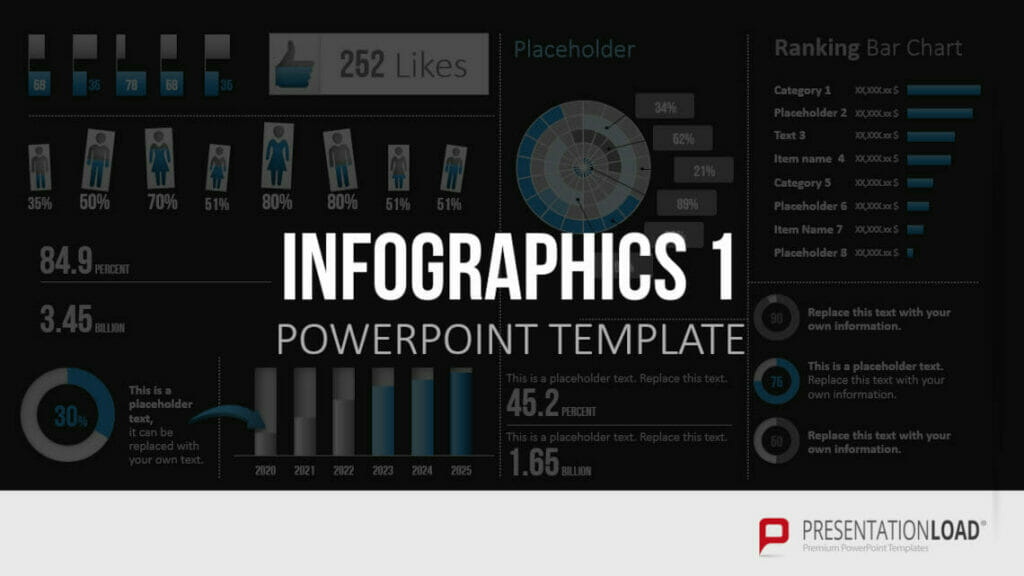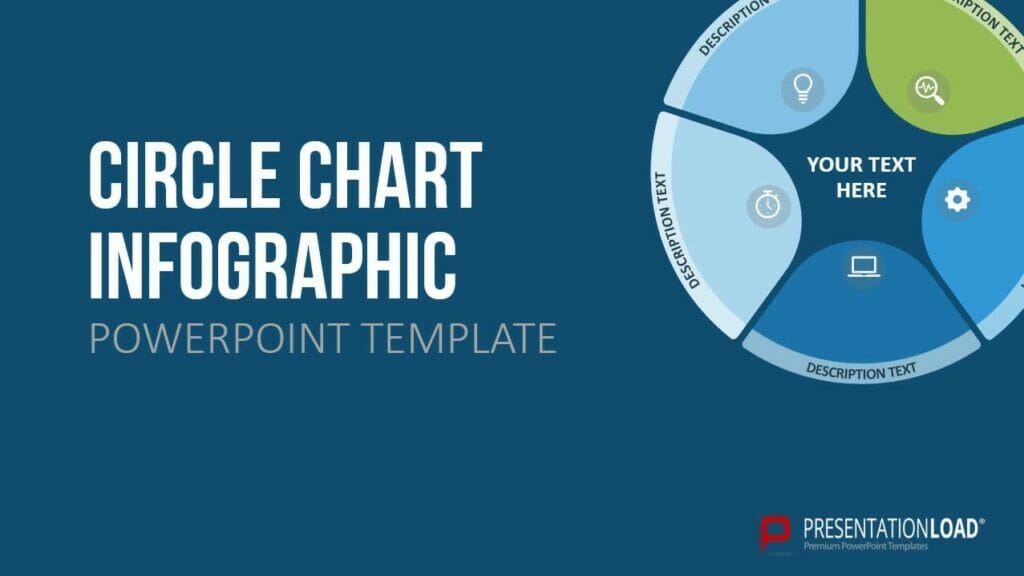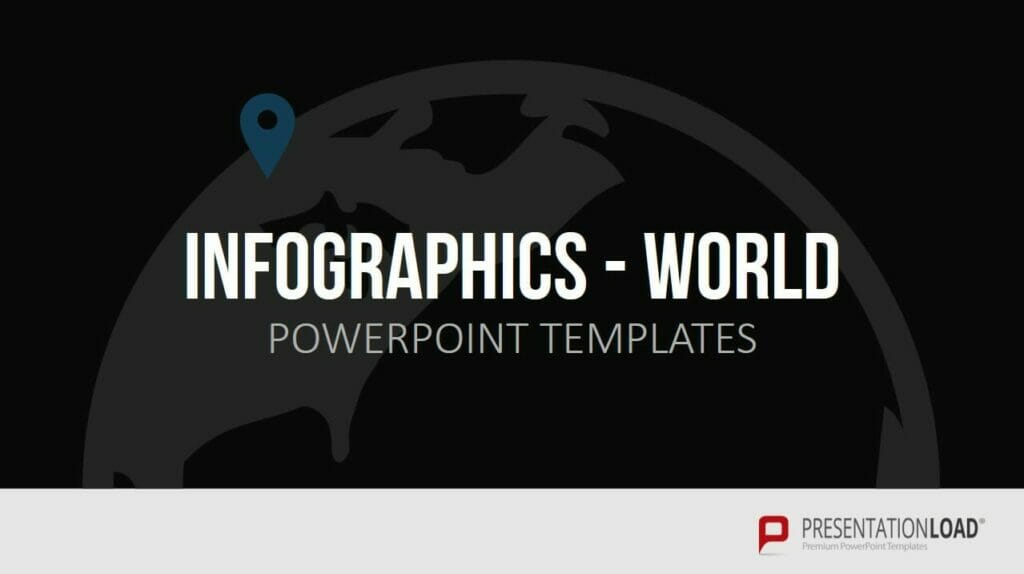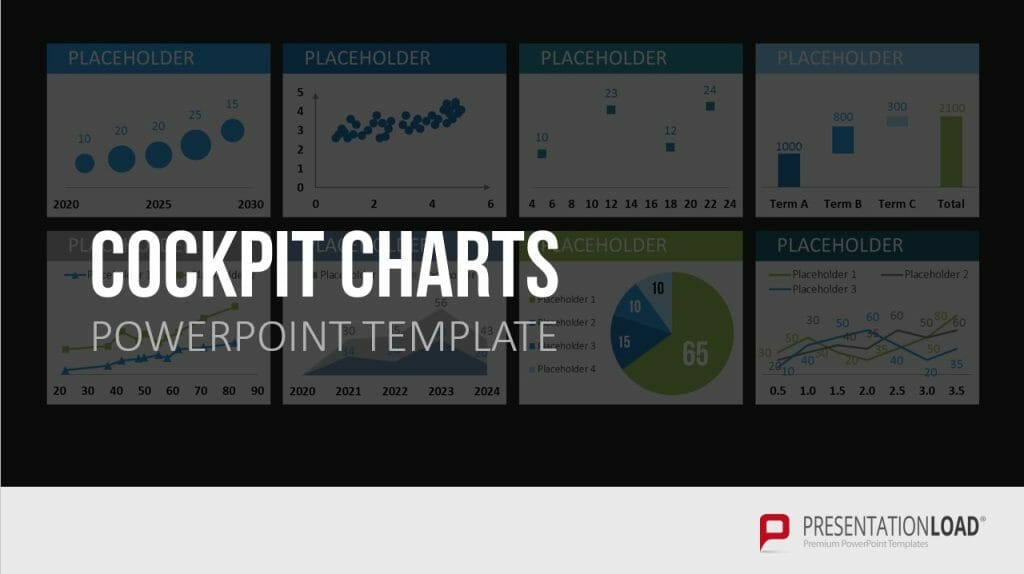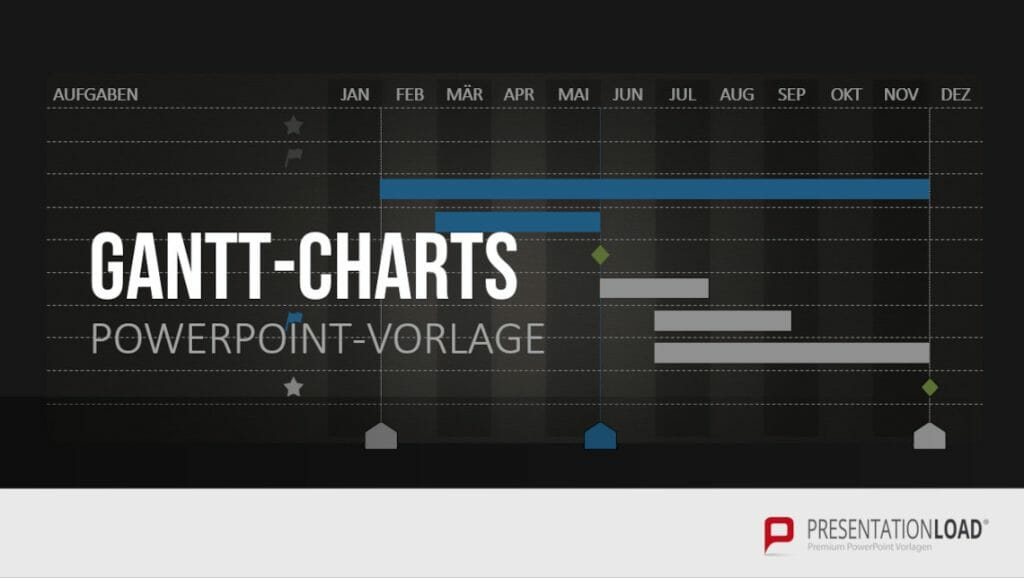
Target Group Analysis – Creating Successful PowerPoint Presentations by Focusing on the Target Audience!
Your PowerPoint presentations always have one goal: to resonate with the audience and generate a conclusive (buying) action. To achieve this goal, it is essential to focus on your target audience.
Today, we will present how to conduct a successful target group analysis and provide many other helpful tips.
What is a target group?
Today, we delve deep into the world of marketing and focus on a central question: What is a target group? As a business owner or marketer, you want to successfully market your product or service or deliver an effective strategy in PowerPoint to communicate your message to the right people.
Having only your own goals in mind risks talking past the interests and needs of your audience. A fundamental understanding of the target audience is crucial in this regard.
In this article, we will define the term “target group” more precisely, discuss its significance for your business presentation, and provide valuable insights on how to effectively identify and understand your target customers.
Here, we aim to provide you with valuable tips and ideas on how to align your business presentations, particularly your company presentation, with the requirements of your customer base.
Because a successful presentation is more than just a few slides with text and images. It’s about convincing your customers and providing them with added value.
First and foremost, you should have a clear understanding of who your target customers are. What are their needs? What are their challenges? Only by answering these questions will you be able to create tailored slides.
Why should you analyze your target group?

Why should you analyze your target group? The target audience is a crucial component of any marketing strategy as it represents the individuals who are most likely interested in what we have to offer. By clearly defining your target customers through target audience analysis, you can specifically address their needs, preferences, and behaviors.
Every persuasive presentation is precisely tailored to the audience and should individually address the desires and requirements of customers. This allows you to develop customized core messages and presentations that generate strong resonance and ultimately lead to increased sales and success.
Furthermore, understanding your target group allows you to develop and present products and services that meet the specific needs of your customers. By understanding their problems, desires, and challenges, you can offer innovative solutions that provide real value.
Accurate target audience definition thus forms the foundation for successful benefit communication and strengthens your company’s competitiveness in the market.
Target audience analysis is important for several reasons, particularly in the early stages of creating a company presentation:
- Right language & effectiveness of core messages: When you know who your target group is, you can tailor your statements and value propositions precisely to effectively reach that group. For example, communicating with students requires a different style of language than communicating with C-level decision-makers.
- Understanding needs and interests: Knowing your target audience allows you to better understand what interests and needs them. This enables you to create relevant and engaging content.
- Creation of personalized content: You can create personalized content for your PowerPoint presentation that is specifically tailored to the requirements of the target group. Personalized content is often more effective than generic content as it gives the feeling of being directly addressed. This can improve the response to your messages and strengthen the connection to your brand or organization.
- Improvement of customer engagement: When you know and understand your target audience well, you can build a deeper connection and bond with them. This can lead to higher customer satisfaction and loyalty.
- Prediction of objections and behaviors: Thorough target group analysis can help you anticipate potential objections and behaviors. By understanding the needs, preferences, and purchasing habits of your target audience, you can better predict how they will react to certain situations or offers. This allows you to be proactive and adjust your communication accordingly.
- Enhancement of competitiveness: Understanding your target audience can give you a competitive advantage. When you better understand what your target audience wants and needs, you can develop unique offerings that your competitors don’t provide. This can help strengthen your market position and increase your competitiveness.
- Achievement of better results: By aligning your communication with your target group, you can optimize the desired outcomes, such as increasing awareness of a problem and its appropriate solution. You create a compelling call-to-action that drives sales and conversion rates upward, leading to increased revenue and success.
Knowing your target audience is therefore a key element for any effective company presentation.
How to analyze a target group
Understanding your target audience and effective storytelling are the keys to an effective presentation. Your potential customers are not just an anonymous mass, but a group of individual people with their own experiences, thoughts, and feelings.
Put yourself in the shoes of the listeners. The better you understand them, the higher your chances of success and creating a PowerPoint presentation or any other type of presentation that truly makes a difference.
The core question in every customer analysis for a sales presentation is: Why does a customer buy your product? Therefore, you should take a few hours to gather as much information as possible about your target audience. Simply go through the following questions (we’ve done the groundwork for you) and preferably write down the answers.
1. Characteristics of your target group
The concept of the ideal customer
Decision-makers (Characteristics, roles, companies)
| Demographic characteristics | Psychographic characteristic | Socioeconomic characteristics | Company-related characteristics | Operational characteristics | Procurement-related characteristics | Behavioral characteristics |
| • Age • Gender • Personality • Location/Region • Cultural characteristics • Number of participants/group size | • Personality • Beliefs • Values / Attitudes / Interests • Expectations for the presentation • Motivation / Willingness to make decisions • Prior knowledge of the topic • Lifestyle | • Income / Education • Education level / Degree • Professional experience • Tenure in the company • Position / Department / Functions • Customer type Business customer (B2B) or individual customer (B2C) | • Company type / Industry • Hierarchies • Company size / Number of employees • Locations • Competitive situation • Revenue developments • Internal and external staff | • Technologies / Software / Tools used • Competencies • Know-how • User status Logistics / Processes / Workflows | • Procurement policy • Role in the buying center • Buying criteria / purchasing behavior (situational) • Triggers for purchase • Existing relationships / suppliers • Formal criteria / procurement, purchasing guidelines • Understanding between buyer and seller • Order volume | • Brand loyalty • Product and brand preferences • Usage rate • Willingness to try new things • Risk tolerance • Sense of urgency • Information-seeking behavior • Media usage |
2. Interests, values, beliefs
3. Needs and expectations of your target audience
Inform (information needs)
Persuade (change opinions/attitudes)
Decide (actions, buying motives)
Expectations and content
Influencing factors
Addressing, presentation format, and style
After the presentation (preview of goals)
Attitude of your target group
5. Possible reservations, objections, or barriers
Reservations
Objections
Barriers
6. Objectives
7. Knowledge, prior knowledge, understanding
Prior Knowledge
Understanding
8. Emotions of your target group
Emotions are a powerful driving force for actions. Try to identify the emotional states that your target audience is likely to experience in relation to your topic.
Fear, excitement, frustration, hope – all these emotions can both present barriers and opportunities for your message. Design your presentation to address and guide these emotions.
9. Dynamics of the group
If your target audience consists of a group of people, it’s important to consider the dynamics within that group. Understanding these dynamics can help you make your presentations more effective.
10. Empathetic understanding
Lastly, it is important to develop an empathetic understanding of your target audience. Try to put yourself in their shoes and see the world from their perspective. This can help you convey your message in a way that is respectful, authentic, and persuasive.
11. Feedback and interaction
The target audience analysis is an ongoing process. Take every opportunity to gather feedback from your participants and engage with them. This can be done during the presentation through questions and answers, discussions, or interactive elements, or after the presentation through surveys, interviews, or social media.
This feedback and interaction can provide valuable insights and help you improve your future presentations.
Target group analysis with the PRESENTATION CANVAS©
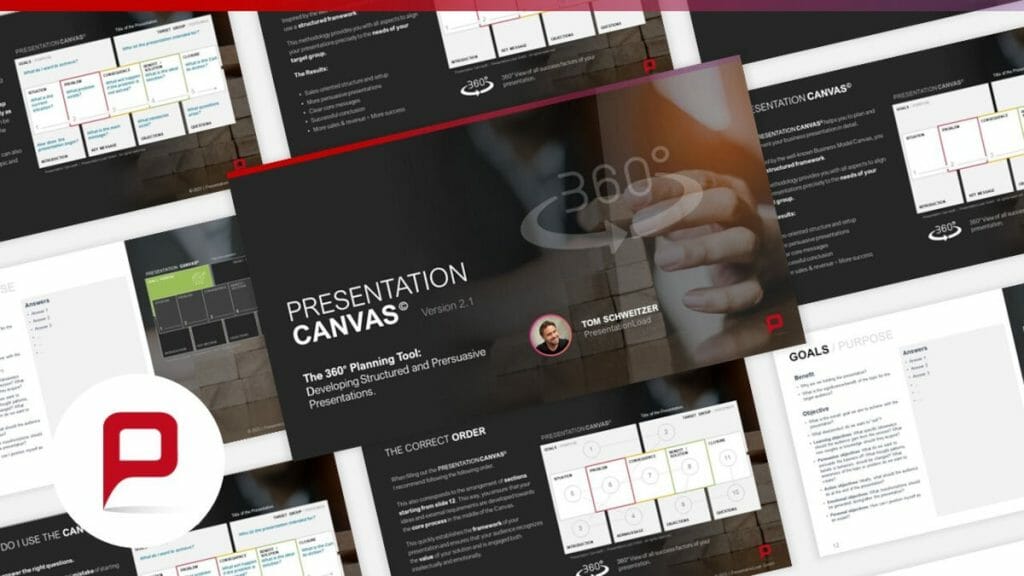
Many people make the fundamental mistake of starting to create slides directly without thoroughly understanding the goals of their presentation and their target audience.
With the help of the PRESENTATION CANVAS© by PresentationLoad, you can plan and execute a compelling business presentation in detail. This structured framework is based on the well-known Business Model Canvas and provides a methodology that encompasses all aspects to precisely tailor your presentation to the needs of your target audience.
Instead, it is recommended to go through each field of our PRESENTATION CANVAS© step by step in the right sequence, together as a team. Only in this way can all perspectives and opinions within a company be taken into account.
You can download the PRESENTATION CANVAS© for free as a PowerPoint template here.
Other analysis tools for researching your target audience
There are various analysis tools and methods that can support you in researching your target audience. One particularly effective tool is social media analysis.
In this process, data from social networks is collected and analyzed to gain a better understanding of user behavior. Through this analysis, you can discover which topics interest your target audience and how they respond to specific content.
Overall, there are many different ways to research your target audience. However, it is always important to carefully evaluate the data you collect and incorporate it into your marketing and communication strategy. This is crucial for long-term success in effectively engaging with your target audience.
Market Research and Analysis Tools
Tools like Statista, Nielsen, comScore, LinkedIn Sales Navigator, and SimilarWeb provide comprehensive data and insights on demographic characteristics, interests, behaviors, and preferences of target audiences. These tools can help you analyze the market and gain a deeper understanding of your target audience.
Social Media Analytics Tools
Platforms like LinkedIn, Facebook Insights, Twitter Analytics, Instagram Insights, and YouTube Analytics provide insights into the behavior and demographics of your social media followers and visitors. You can collect data on age groups, gender, locations, interests, and engagement rates to better understand your target audience and create more targeted content.
Surveys and Questionnaires
Tools like Google Forms, SurveyMonkey, and Typeform allow you to create customized surveys and questionnaires and distribute them to your target audience. You can ask questions about their interests, needs, preferences, and demographic characteristics to gain important insights.
Website Analytics Tools
Tools like Google Analytics provide information about visitor behavior on your website, such as their demographic characteristics, interests, geographic locations, time spent on the site, and interactions. This can help you understand the characteristics and preferences of your website visitors and adjust your content accordingly.
CRM Tools
CRM tools like HubSpot, Salesforce, Pipedrive, or Zoho provide a central platform for capturing and managing customer data. You can gather information on customer interactions, buying behavior, preferences, and demographic characteristics to create a comprehensive profile of your target audience.
Google Trends
Google Trends allows you to analyze search queries and interest trends for specific topics, keywords, or products. It provides insights into search volume and geographic distribution of search queries, which can help you identify trends related to your target audience.
Target Audience / Customer Persona Workshop
A workshop can provide an interactive and collaborative way to analyze the target audience and gain valuable insights. In the workshop, structured information about the target audience is collected, such as demographic characteristics, behaviors, and interests.
Based on this information, concrete customer personas or buyer personas are created together, which provide a detailed representation of the target audience to enable targeted and customer-oriented communication.
Customer Persona PowerPoint Template
Using the persona concept, individual customer segments can be vividly described. A persona represents a detailed and tangible description of a target audience or customer segment for products and services.
Creating a persona gives the customer a specific face, and all purchasing and decision-making aspects are explained in a clear presentation. The persona description can be considered as a profile of the customer.
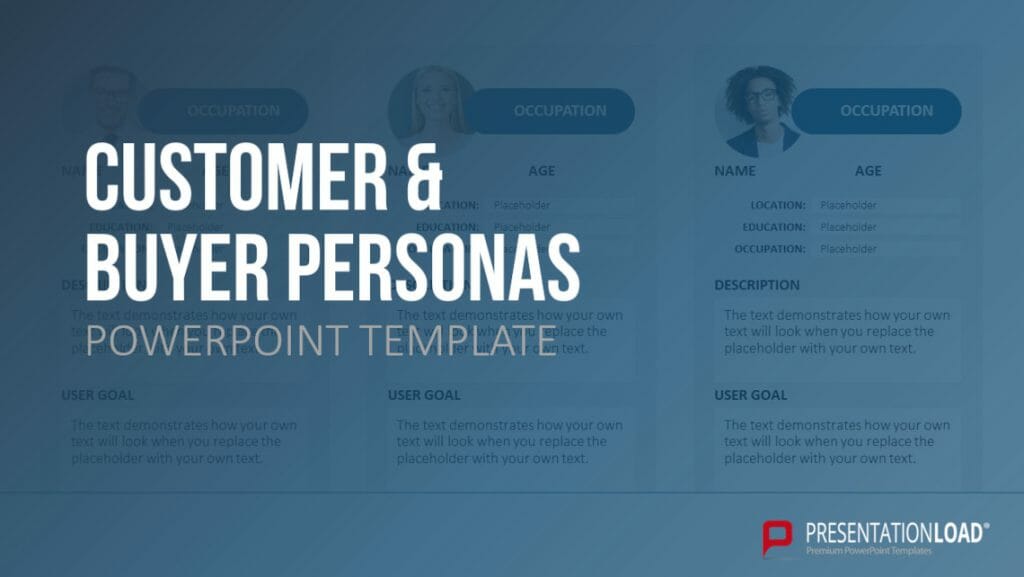
Target group analysis using personality types/models
In presentations, it is important to address different personality types in order to effectively reach all participants with the right content and arguments. By incorporating a balanced combination of these approaches in your presentation, you can ensure that your message resonates with different listeners and achieves a positive impact.
- Analytical Thinkers: For individuals who think analytically, it is important to provide well-researched facts, data, and statistics. Use clear and logical reasoning in your arguments.
- Pragmatic Decision Makers: Pragmatically oriented individuals want to know how the presented ideas can be implemented in the real world. Provide concrete examples, practical guidance, and solutions to meet their needs for applicability and feasibility.
- Harmonious/Socially-oriented individuals: These individuals value interpersonal relationships and teamwork. Focus your content on social impact, collaboration, and examples that strengthen relationships and community.
- Extroverted/Creative Minds: They prefer an innovative and inspiring approach. Use visual representations, stories, and metaphors to stimulate their imagination and appeal to their emotional side.
- Visionary Thinkers: Visionary individuals are future-oriented and have a broad perspective. Present long-term goals, trends, and innovative ideas to ignite their imagination and awaken their motivation for change and growth.
There are, of course, many different typology models that you can use in marketing to categorize your target customers. As a holistic approach, insights from various scientific disciplines are combined and condensed into practical approaches.
The most well-known ones are:
Limbic Map
The Limbic Map offers a model based on insights from neuroscience and psychology that depicts the purchasing motives of customers. With the help of this map, it demonstrates why customers buy a particular product, prefer a certain brand, or respond to specific advertisements.
However, the Limbic Map is not limited to the analysis of individual consumers. It also provides valuable insights into understanding and describing the buying behavior, motives, and requirements of business customers. Within an organization, it is ultimately people from various functional areas such as management, procurement, or controlling who make purchasing decisions.
Sinus-Milieus
The concept of Sinus Milieus developed by Sinus provides a target group typology based on behavior-related segmentation variables, enabling a better understanding of the lifeworlds and realities of target groups.
This market and social research company has created a typology that offers a realistic representation of the target audience and enables optimized marketing based on behavior-related factors.
The right way to address the audience

The way we address the audience is crucial for ensuring successful communication. Whether in presentations, speeches, or meetings, the way we address our audience can make the difference between disinterest and enthusiastic engagement.
It is about understanding the needs, expectations, and interests of the audience and developing a communication strategy based on empathy, clarity, and relevance.
Different audiences have different information needs and preferences
It is important to consider the type of experience your audience expects from your presentation. Determine whether they prefer a formal, data-oriented presentation that focuses on facts and figures, or if they prefer an informal, storytelling presentation that incorporates personal anecdotes and narratives. The level of prior knowledge and the depth of information expected by your participants also play a crucial role.
For scientific audiences, factual and data-driven slides are often more effective in persuading them. Superficial statements, excessive use of images and graphics, or oversimplification may be counterproductive. Experts in the field may require more comprehensive and detailed information compared to individuals with limited knowledge.
In contrast, sales presentations may not be successful if they solely focus on listing numbers, data, and technical details. Instead, it is important to build an authentic and trusting relationship with customers and convince them with the right value propositions.
Example:
When an IT service provider wants to convince business department executives of their software solution, focusing primarily on technical benefits may not be the most effective approach. Factors such as user-friendliness, cost savings, and time efficiency should take center stage in the presentation, as those are the aspects that matter most to the end-users.
By excessively emphasizing technical details, as in the example above, the presenter runs the risk of boring the audience, as they may either not understand or only have limited interest in the content.
Influencers, multipliers, and decision-makers
When presenting a project idea, it can be extremely valuable to consider which individuals you specifically want to address. It may be worthwhile to target opinion leaders, enthusiastic supporters, or even those who typically remain in the background.
Targeted communication can help increase acceptance and interest in the project from the outset, ensuring successful implementation.
Learning Styles and Presentation Format
When designing your presentation, it is important to tailor the format and style to meet the expectations and preferences of your target audience. Identify the different learning styles and preferences within your target customers.
Some people learn better visually, while others prefer auditory or kinesthetic (hands-on experience) learning. Adapt your presentation to appeal to different sensory channels.
The 4-Mat system developed by Dr. Bernice McCarthy aims to align the presented arguments with the target audience and thereby increase the effectiveness of the presentation. The system recognizes that people learn in different ways.
To successfully absorb and understand content, we unconsciously seek answers to specific questions. Using the 4-Mat system, it is possible to tailor content precisely to the needs of the target audience.
The 4-Mat system distinguishes between four different learning styles
The Why type is interested in why the presented topic is relevant to them and why they should engage with it.
The What type requires background information and explanations about the content, such as what it is about, when it will happen, etc. Numbers, data, and facts are welcomed and can convince this type of learner.
The How type, on the other hand, prefers practical application examples and wants to understand how something works and can be applied.
The What If type is interested in future scenarios and wants to know what will happen if they follow specific advice or purchase a product. The usefulness and diverse application possibilities are of great importance to this type of learner.
Structure and organization of your business presentation
An important factor for a successful business presentation is the structure of your content. Clear organization helps your audience follow the logical flow of your arguments.
However, be sure to avoid presenting too much information at once, as it can quickly overwhelm your audience and cause them to lose focus.
You can find many helpful tips and tricks in the article “Business Presentation.”
Visualize your slides with charts and infographics
In addition to a good structure, visual elements such as images or infographics play a crucial role in conveying content. Appealing design not only increases the audience’s attention but also helps anchor your message and make it memorable.
Feel free to use charts/infographics from PresentationLoad. Here is a small selection:
You can find many more infographics and charts in the shop ► Visit the shop
Creating an open and inviting environment
Being welcoming, accessible, and empathetic are key elements to create an open and inviting environment in your presentations. Remember that the atmosphere you create contributes significantly to the success of your presentation. Is it more formal, celebratory, or informal?
Such an environment lays the foundation for successful communication with your audience and encourages engagement and active participation.
Involving the audience
Show your audience that you are open to dialogue by asking questions or incorporating a short interactive activity. This creates a friendly atmosphere and encourages active participation from the beginning.
Create opportunities for interaction and engagement during the presentation. This can be done through questions, discussions, group activities, or the use of interactive technologies.
Tips for interactive presentations can be found in the article “Interactive Presentations.”
Clear and understandable language
Use clear and easily understandable language that is tailored to the knowledge and understanding level of your audience. Avoid jargon or complicated terminology that could potentially be off-putting. Terms and concepts can be explained and illustrated with concrete examples.
Eye contact and body language
Actively seek eye contact with your audience to establish a personal connection. Speak with an appropriate volume and vary your voice to maintain interest and attention. Also, use body language to support your message and demonstrate openness.
Tips for body language can be found in the article “Body Language in Presentations.”
Empathetic listening and respect
Show genuine interest in the questions, comments, and opinions of your audience. Practice empathetic listening by being attentive and addressing their needs and concerns. Create a space where different viewpoints are respected and open dialogue is encouraged.
Develop clear core messages that resonate
Based on your analysis of the target audience, develop clear and targeted core messages. These messages should address the needs and expectations of your potential customers and can be based on shared experiences, values, or goals.
Identify these key messages and integrate them into your presentation. By creating resonance, you can establish a deeper connection with your target audience and convey your message more effectively.
Design your presentation around your target audience
Finally, design your slide deck with your target audience in mind. Use language and images that resonate with your target customers. People absorb information in different ways. Some prefer visual information, others auditory or kinesthetic. Understanding your target audience’s preferred learning styles can help you design your presentation to be engaging and understandable for all participants.
Tell a story that captivates and inspires your audience. Provide clear and action-oriented conclusions that encourage your potential customers to take the desired steps.
Storytelling: Your Target Audience as the Heroes of Your Story

There is nothing that surpasses the power of a good story. And when it comes to presentations, the hero’s journey is a powerful tool to captivate and inspire the audience. The hero’s journey resonates deeply within us – it tells of overcoming, courage, and growth.
It shows us that we all have the ability to face and overcome our greatest challenges. And when we integrate this journey into our presentations, we can convey our messages in a way that truly touches the audience. Using the hero’s journey in a presentation means telling our story in a way that appeals to the audience on an emotional level.
We share our own struggles and challenges, and how we overcame them. We show how these experiences have transformed us and made us who we are today. The result is a presentation that captivates and inspires the audience. A presentation that not only conveys facts and data but also tells a story – a story that motivates, moves, and captivates the audience. But above all, a story that lingers in their memory.
Imagine your target group as the heroes of the story:
The hero’s journey is the key to success! Your target audience is the ones who need to take the action you propose. They are the ones you want to inspire and emotionally engage. They are the people whose perspectives and opinions you want to change and influence with your presentation.
Offer: Workshop “The Persuasive Business Presentation” with the PRESENTATION CANVAS©
A precise definition of the target audience is essential for the success of your business presentation and forms the core of PresentationLoad’s agency services in the field of conception & consulting.
Our experienced team is ready to assist you in this crucial task and support you with our extensive knowledge and expertise through workshops and training. ►Visit our agency for more information.
Contents:
Conclusion: Allocate Sufficient Time for Target Group Analysis
The target audience plays a crucial role in determining the objectives. It is essential to use both your own goals and the needs of your target audience as the basis for structuring and presenting your presentation.
Only by considering both aspects can you achieve your goal and create a compelling storyline. It is important to not only present the topic effectively but also to address the audience. Presenting without considering both the topic and the audience can lead to missed opportunities.
When creating a professional business presentation, the focus should not be solely on what you want to say about your company or yourself but rather on what interests and information your audience wants to know. A presentation has its full impact when the core messages are well-crafted, the content is tailored to the specific audience, and it delivers value to them.
Consequently, the target audience significantly influences the specific content of your PowerPoint presentations. This includes determining which slides to use, as well as the structure and flow of the entire presentation. The effort is worth it, as the result is a perfectly tailored presentation that meets the needs and desires of the target audience, particularly in sales-oriented presentations, leading to increased sales, revenue, and overall success.
If you need assistance in creating a presentation or would like to entrust the entire presentation creation process to professionals, we are here to help. With over 25 years of PowerPoint experience, we are familiar with all the tips and tricks to create a compelling presentation. ► Visit our agency.
If you have any questions regarding the article, feel free to contact us at [email protected]. We are here to assist you!
Are you looking for visually supportive and professionally designed slide templates? Take a look at our shop. Here, we offer numerous slides available for download on various (business) topics. Visit our shop today! ► Visit our shop.
You may also be interested in these articles:
